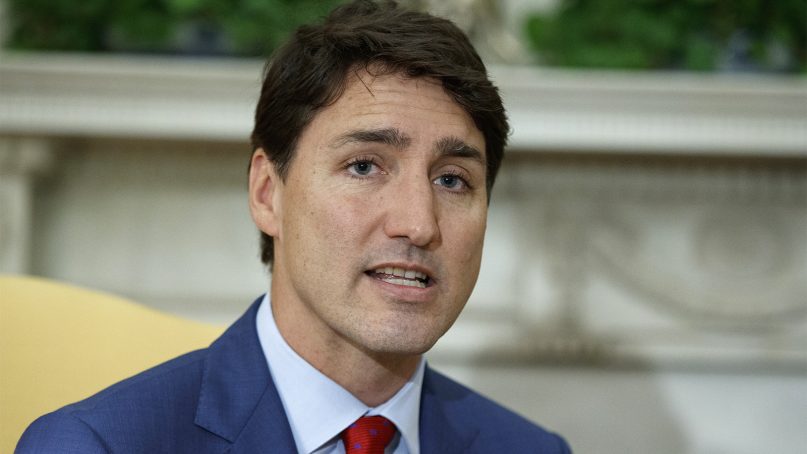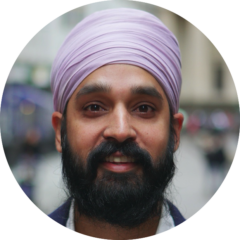(RNS) — This week, Time magazine published a 2001 photo of Justin Trudeau, now Canada’s prime minister, attending a party with a “Thousand and One Nights” theme as Aladdin, wearing brownface and a turban.
The debate over the photo, aided by the internet, has been intense and international. Most who are critical of his racist “costume” have either claimed that it is in poor taste and unintentional or else harmful and dehumanizing.
I think it’s both.
In the past two weeks, in the class I teach at Union Seminary in New York, we have been reading Edward Said’s germinal work, “Orientalism,” making the timing of this brownface conversation providential for our discussions.
At the risk of oversimplifying, Said shows how European colonialism was founded on the principle that the Eastern peoples and cultures are inferior to, and in need of saving by, those of the West. The drive to colonize and subjugate people around the world relied on this supremacist logic and uneven exchange.
The stereotypes of Eastern people — irrational, uncivilized, backward — are part of Orientalism’s legacy. We continue to produce and reproduce these stereotypes over time and across cultures, from our romanticizing inaccurate portrayals of Hindus and Buddhists as incapable of extremist violence (see today’s Myanmar and India) to equally inaccurate and demonizing portrayals of Muslims as inherently prone to violence.
These are two sides of the same Orientalist coin. Both are dehumanizing because they strip people of their full human selves and flatten them into types.
Like white supremacy, Orientalism can be understood as a lens through which we see the world and also a power dynamic by which the world has been structured. I find this approach to understanding Orientalism helpful because it reminds us that Orientalist ideas are so pervasive that we internalize them without necessarily being conscious of it.
Current debates on racism also help us think about harm in this case. The perpetuation of Orientalist stereotypes is problematic because they reproduce power dynamics that have their roots in supremacy, dehumanization and violence. Whether we justify our actions by claiming ignorance or good intentions, it’s undeniable that they impact others in harmful ways.
Just because something is relatively less harmless, in other words, doesn’t mean it’s not still harmful and dangerous. We can’t wait until someone is killed out of racist hate to take a stand. At that point, it’s already too late. We need to squash racism whenever we encounter it to ensure that we don’t allow it to fester.
It’s this way of looking at Orientalist racism that helps us understand how Trudeau’s decision to wear a turban and brownface for a party could be both in poor taste and unintentional and harmful and dehumanizing.
After the racist photo came to light this week, Trudeau offered an apology that reflects this outlook. “I should have known better, but I didn’t. I am really sorry. … I am disappointed and pissed off.”
His apology claims ignorance, but it also indicates that this neither excuses his wrongful behavior nor undoes the damage and harm it has caused to those affected. It also indicates that he is aware that such behavior is unbecoming of any human being, let alone a world leader who champions diversity and inclusion.
At the least, this photo gives us an opportunity to understand that good intention and harm are not mutually exclusive. Any one of us can be guilty in perpetuating stereotypes of foreigners that are harmful and dangerous, whether we mean it or not. That’s an important lesson for us all to take away.






